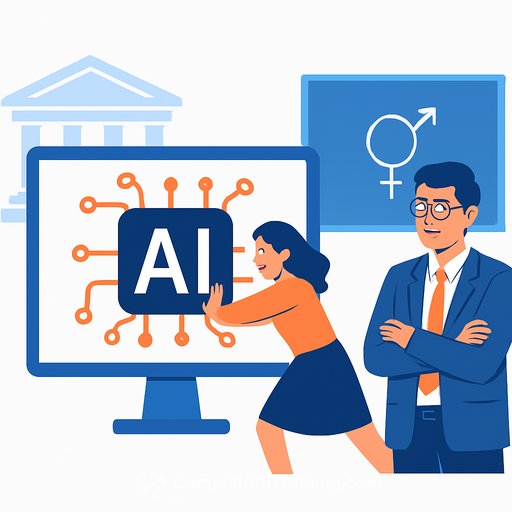Generative AI in India's B-Schools: Progress, caution, and next steps for educators
A new nationwide survey of 235 faculty members from leading Indian management institutions (IIMs, IITs, ISB, XLRI, SPJIMR, MDI, NMIMS and others) was released at the 15th Indian Management Conclave (IMC 2025). It shows strong momentum for Generative AI in research and teaching, steady movement in curriculum design, and slower adoption in assessment and administration.
Vineet Joshi, Secretary, Higher Education, noted that AI can expand student access, enable continuous questioning, and reduce barriers related to language, background, and geography. He emphasized responsible use so technology complements human intelligence and supports the broader goal of Viksit Bharat.
T. G. Sitharam, Chairman of the AICTE, joined as Guest of Honour. The event highlighted the need for policy guidance, training, and practical frameworks to help institutions adopt AI responsibly and at scale.
Where faculty use AI today
- Research: 3.73/5
- Teaching: 3.58/5
- Curriculum development: Growing use reported
- Student assessment and administrative tasks: Limited use so far
Translation: faculty see immediate value in idea generation, literature review, and content creation. Assessment integrity and admin workflows need clearer policies, tooling, and support.
Impact on students: cautious optimism
- 51.1% reported a favourable impact on student learning
- 21.3% said it is too early to assess
- 18.1% observed an unfavourable impact
- 9.6% reported no significant impact
- Over half expect AI's role in teaching, curriculum, and research to increase in the next 12 months
Confidence is growing, but uneven. Outcomes depend on clear use-cases, academic integrity guardrails, and student training.
Faculty readiness
- 55% identify as intermediate users
- 7% identify as experts
- Implication: large need for structured capacity building across departments
Top barriers slowing adoption
- Ethical and integrity concerns: 192 (frequency of response)
- Inaccuracies or unreliable outputs: 152
- Lack of regulator policy: 112
These barriers are solvable with clear institutional policy, calibrated assessment design, and evidence-based training. Coordination with regulators such as the AICTE and the Ministry of Education will help align campus practices with national priorities.
What this means for deans and faculty
- Set principles before tools: define acceptable use, disclosure norms, data privacy, and plagiarism/AI-collusion policies for students and staff.
- Build staff capability: run short, role-based workshops for research, teaching, assessment, and admin teams; create peer mentors inside each department.
- Update curriculum: add AI literacy modules, prompt design, fact-checking, and AI-augmented analysis across core courses.
- Redesign assessment: mix oral defenses, in-class work, process logs, and AI-use disclosure forms to protect integrity while encouraging responsible use.
- Pilot admin use-cases: automate routine tasks (scheduling, FAQs, first-draft communications) with human review to free time for teaching and advising.
- Measure outcomes: track learning gains, error rates, and time saved; refine rules and training based on evidence.
- Create a governance loop: a small cross-functional committee to review tools, monitor risks, and update policy every semester.
Voices from IMC 2025
Amit Agnihotri underscored that AI is set to change business processes, skills, and higher education-and that management education sits at the frontline of this shift. The takeaway for campuses: move with intent, set clear boundaries, and upskill faculty fast.
Quick start: a 90-day plan
- Weeks 1-2: Publish interim AI use guidelines; identify 3-5 priority use-cases per department.
- Weeks 3-6: Run hands-on workshops; create exemplar assignments with AI-use disclosure.
- Weeks 7-10: Pilot in two courses and one admin workflow; collect metrics on quality and time saved.
- Weeks 11-12: Review results; adjust policy; plan scale-up for next term.
Capacity building resources
If you're setting up structured training for faculty and staff, explore curated AI courses by role here: Complete AI Training: Courses by Job. Start with modules on responsible use, evaluation, and classroom implementation.
Your membership also unlocks:






